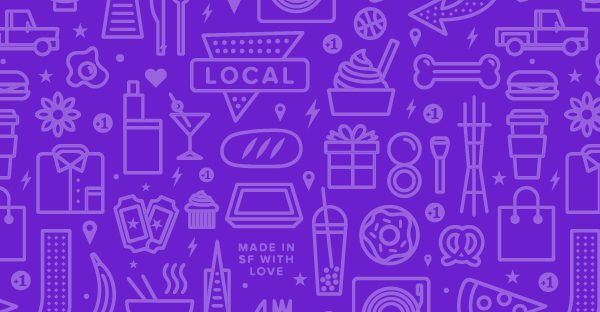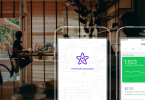Thousands of independent and franchise restaurants offer loyalty programs, and they’re working. According to the National Restaurant Association, 56 percent of family restaurants and 69 percent of fine dining establishments detected increases in loyalty-program participation. The research also revealed that 57 percent of adult consumers are more likely to visit restaurants that offer reward programs. Loyalty programs are here to stay.
However, as consumers increasingly use mobile devices to make dining decisions, share restaurant recommendations, post Instagram photos of their food, loyalty programs need to upgrade digitally to keep up with their increasingly tech savvy customers. The solution? Modern digital loyalty programs. They drive customers to share socially, connect on special occasions, earn personalized rewards, and receive benefits without needing to save punch cards or remember to get them punched.
Download our free customer loyalty success guide to learn how to drive customers back 2x more.
Why choose a restaurant loyalty program
Restaurant loyalty programs provide the ideal platform to run multiple marketing strategies since not all customers are the same. Some consumers shop to save money, some respond to the chance at big prizes. Today, the millennial generation likes (and expects) to interact personally with restaurants and share their experiences online. The best in class restaurants offer modern digital loyalty programs to not only incentivize their customers to come back, but also to provide customers a venue to connect with the business however they like.
These types of loyalty programs are a win-win: great for the customers, and great for the business. If you structure your loyalty program effectively, like have multiple tiers or rewards and encourage customers with various attitudes.
Here are three 4 key reasons to choose a restaurant loyalty program.
1. To drive same day sales
Every business has sales slumps, and filling the slow periods in restaurants is especially crucial for staying profitable. Restaurant loyalty programs and mobile communications provide an unparalleled benefit for restaurant management—filling seats during slack times. Mobile marketing allows managers to promote daily specials through rewards programs, offer discounts for early diners, promote signature drink specials if legally allowed, and encourage breakfast or lunch guests to return for dinner service.
Research shows that 91 percent of adults keep their cellphones close 24/7 and that most people look at their text messages. Restaurants can remind customers of specials and events, offer discounts on slow-moving items at the restaurant, encourage dessert and takeout sales, and achieve other restaurant objectives through well-designed restaurant loyalty programs.
2. To celebrate birthdays
Recognizing customers’ birthdays impresses people and builds loyalty for all businesses, and restaurants gain additional benefits from birthdays. People spend more money on birthdays, and encouraging people to celebrate at a given restaurant increases business, encourages larger dining parties, creates goodwill and boosts repeat business. The National Restaurant Association states that 70 percent of people visit restaurants to celebrate birthdays. Loyalty programs inform management and staff when customers have birthdays, and a little recognition for the birthday guy or gal generates powerful PR and goodwill.
3. To encourage repeat visits
Repeat customers are easier to persuade with marketing materials than strangers. According to research from FohBoh.com, loyalty programs are more successful than other forms of advertising because they identify people who are already receptive to the message. Repeat customers spend 33 percent more new customers and refer their favorite restaurants to friends and families at a 107-percent rate. Advertising costs about six times as much to attract new customers as it does to keep established guests returning regularly.
4. To consolidate social media and in-house promotions
Rewards programs integrate well with social media promotions, and restaurants can promote their foods, culinary philosophy and customer-targeting strategy in coordinated campaigns across multiple platforms and media outlets. Drive more customers to websites or brick-and-mortar locations by promoting loyalty rewards, creating fun games, encouraging customers to share reviews, and inviting new guests to join the programs.
POS integrations include most popular forums such as Facebook, Google+, Twitter, LinkedIn and Pinterest. Great guest experiences happen when customers have an “aha” moment, and reaching a layered loyalty milestone, sharing a family celebration, or receiving useful information about a restaurant event could certainly qualify as an “aha” experience. Connect with guests across multiple forums to share sympathy for causes, build loyalty and provide personal recognition.
How to choose the right restaurant loyalty program
Restaurant loyalty programs offer all kinds of rewards and use various levels of technology. Points awarded for each dollar spent allow customers to choose from various rewards, and these accumulate each time a guest dines in the restaurant or orders takeout food. Choosing the right program involves assessing hardware and software expenses, deciding whether customers need to carry identification, and choosing or developing an optional mobile app.
Choosing strategy and analyzing results help restaurants refine their loyalty programs and interact more efficiently with customers. Games, discounts, free food, expanded services, recognition and more complete dining experiences serve as compelling rewards for customers.
Here are three things to look for when choosing a restaurant loyalty program:
1. Game-like incentives
Customers and digital addicts love games, and those that offer real financial or personal rewards attract new patrons and strengthen loyalty among repeat customers. Loyalty rewards can be based on games such as purchasing the most of a certain menu item, testing skill at virtual-reality games with real-world audiences, or educating customers about culinary practices in ways that favor particular restaurants. Games can test trivia knowledge during each restaurant, and tests scores qualify customers for different discounts. Managers could offer a free meal to the first person that answers a daily trivia question correctly.
2. Customer base building features
Integrating loyalty program members, online newsletter subscribers, and social media friends helps to build customer databases and attracts new customers. A creative rewards program draws media attention and increases referrals to build marketing lists for email campaigns and company newsletters.
3. Unique rewards and promotions
Restaurant rewards programs should offer unique guest experiences that draw on customer emotions. Guests might enjoy receiving the recipes for their favorite dishes, cook books or hands-on cooking lessons. Choosing a unique reward that creates a memorable experience is more important than saving money for well-off guests, but getting a hassle-free discount or free side dish impresses fast food customers. Tailor rewards to provide the best incentive for type of cuisine, time constraints and the demographic market.
Here are a few examples of creative and compelling rewards:
- T.G.I. Friday’s allows loyal customers to preview and rate new menu items.
- Customers get 10 percent off all meals when they sign up for P.F. Chang’s China Bistro’s Warrior card.
- Outback Steakhouse gives customers chances to win Tim McGraw memorabilia, branded cologne or CDs.
- Starbucks offers gold-level members chances to buy limited-edition coffee from the Galápagos Islands or get discounts on trips to these islands that Darwin made famous.
Now you know why it’s important to have a customer loyalty program and how you can choose the right one for your restaurant. Good luck!






Like this article says, 91 percent of adults keep their mobile devices close to them at all times. So a mobile app of a customer loyalty program would be the best solution to reach more customers the most convenient way possible. One of the biggest benefits of a mobile loyalty app is getting to know your customer better by gathering data on their behaviors.